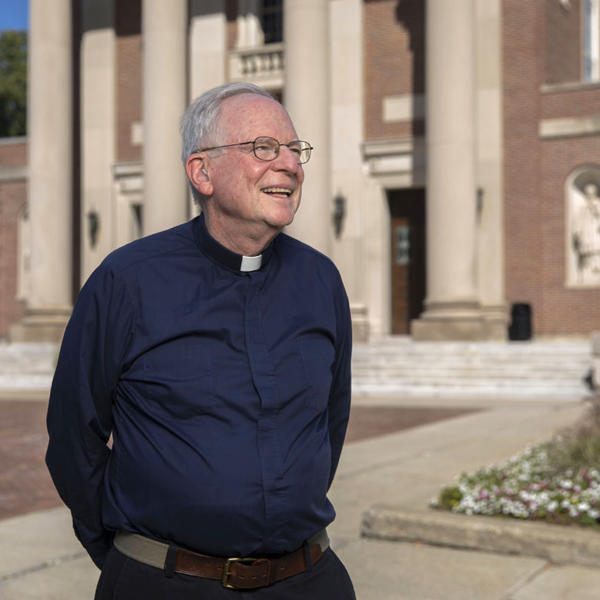The College of the Holy Cross Archives and Distinctive Collections has received a $250,000 grant to fund digitizing the Deaf Catholic Archives, which is housed at the College. The project, supported by a Digitizing Hidden Collections grant from the Council on Library and Information Resources (CLIR), will open access to a collection of print and audio visual materials. The CLIR grant is funded by The Andrew W. Mellon Foundation.
The two-year project, which began in June, will digitize key components of the Deaf Catholic Archives (DCA) to make the unique collection discoverable, accessible and usable to the Deaf community, as well as researchers and anyone interested in the material. The collection was assembled by Rev. Joseph Bruce, S.J., from the many donations he has received through his connections with the Deaf community.
“The Deaf Catholic Archives is a unique collection that amplifies unheard voices in the mainstream historical narrative,” said Abby Stambach, head of Archives & Distinctive Collections.
Although the DCA has been housed in College archives since 1990, the Holy Cross connection with Deaf Catholics dates back to 1946 when Rev. Leo Guay S.J., a professor at the College, wrote to the bishop of Springfield and received permission to begin ministering to the Deaf, according to Fr. Bruce.
“The Deaf Catholic Archives is a treasure and this treasure is the heart and soul of Deaf Catholics since the Sisters of St. Joseph from France started the first Catholic School for the Deaf in 1837 in Carondolet (St. Louis), MO. The collection is an excellent starting point for writers to begin their research,” said Fr. Bruce.
Today, the DCA contains newsletters, educational manuals, scrapbooks, photographs and pamphlets dating back to the early 20th century. Some items showcase how far education for the deaf and Deaf culture have come, including copies of The Catholic Deaf-Mute, a magazine from the early 1900s, and typewritten and printed sign language books with no photos or illustrations, only written descriptions of how to make the signs.
The DCA provides insight into the history of Deaf culture, as well as an understanding of how Deaf Catholics practice their faith in new ways, when traditional methods are insufficient. At the conclusion of the digitization project, a variety of materials, such as newsletters, documents, photographs and ephemera from a variety of institutions across the globe — including parishes and regional Deaf Catholic organizations — will be accessible online via CrossWorks, the College’s institutional repository which is used to preserve the Holy Cross community’s intellectual, creative, and scholarly work.
The project’s goal is to digitize a substantial amount of print materials in the archives. There are 222 different newsletter publications from more than 10 countries that contain religious and secular perspectives of the Deaf community from many parishes, religious organizations and domestic and international Catholic schools for the Deaf ranging from the 1930s to the present.
“While they may seem like ordinary church newsletters, they give valuable insight into the Deaf community beyond how they practice their faith,” said Stambach.
In addition, a small number of scrapbooks are recommended for digitization. They are some of the most fragile items in the DCA, with the earliest dating to the 1920s, and digitization is necessary for their long-term preservation.
College of the Holy Cross Receives $250,000 Grant to Digitize Portions of Deaf Catholic Archives

Council on Library and Information Resource funding will enable the College to protect key components of the special collection and increase access.
Read Time
2 Minutes